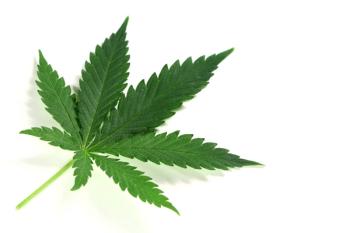
Cannabis Science and Technology
- March 2023
- Volume 6
- Issue 2
- Pages: 30-34
Keeping it Clean: Recapturing Terpenes for Added Value and Cleaning Wastewater Streams
In this article, Markus Roggen demonstrates a new method for recapturing terpenes lost during the cannabis extraction process.
Terpenes provide cannabis with distinctive aromas and flavors that are often desired by the consumer. During the cannabis drying and decarboxylation stages, up to 30% of terpenes are lost along with the water phase from the product (1). While this terpene loss stream is often overlooked, there are methods to retain terpenes. To preserve these sought-after flavors, terpene recapturing from the water fraction is currently done via simple liquid-liquid separation (LLE) or distillation. However, these methods are rarely used because they are costly, energy-intensive, or difficult to scale. Here, we demonstrate a new method for terpene recapture by leveraging counter-current extraction.
When thinking of cannabis, we instinctively think of its smell, the flower buds on the table, the storefront selling it, and the joint being smoked at an event. Sure, cannabinoids (specifically tetrahydrocannabinol [THC] and cannabidiol [CBD]) are what everyone writes about, as they are known to have psychoactive effects. Terpenes give the plants their distinct aromas and flavor profiles and the lack of terpenes is the main criticism of refined cannabis products, such as vapes and dabs.
Terpenes are volatile organic compounds that are easily lost to the surroundings during various stages in the industrial pipeline. There might be an excess of cannabis on the market, with overproduction of CBD isolate and THC distillate, but terpenes are hard to come by.
Consequently, recapturing the terpenes in the extraction process has benefits for the producer. Current terpene recapture methods include liquid-liquid extraction (LLE) or distillation. However, both methods are time consuming and expensive. Instead, we propose that a different method, specifically counter-current extraction, could be utilized.
One point in the industrial pipeline where a high percentage of terpenes is lost is during the drying and decarboxylation stage (1). There is still debate over the best way to dry and decarboxylate cannabis flower. Current methods can either take multiple days, are not very exact, rely on observation, or can result in poor quality of flower because of mold growth or substantial terpene loss. Producers have a financial incentive to recapture terpenes lost in the drying process for re-introduction into their products. Their retention in the product is of high interest to consumers, not only for their taste and smell, but for potential health benefits as well. Methods for reintroducing terpenes to various cannabis products, from flowers to vape oils, are currently being explored (2).
Aside from re-introduction into the products, there are additional incentives to recapture terpenes from water waste streams. A terpene recapture method may be used to clean water that results from drying cannabis. Due to the odorous quality of solutions containing as little as 2% terpenes, these solutions are often treated as special waste. Being able to recapture the terpenes from wastewater would help mitigate the need for special waste treatment and allow for the recaptured terpenes to be used elsewhere.
Any scalable and reliable separation method would help producers recapture terpenes from their wastewater and reuse those terpenes for other products. This would save producers from the cost of managing special waste treatment for their wastewater and help them reintroduce terpenes into their products for their consumers. Once fully optimized, this system has the potential to increase terpene recapture efficiency in laboratories using fewer resources.
Experiments
To investigate a scalable solution for recapturing terpenes, we designed experiments for 5 L of water/terpene mixture that were obtained from a vacuum oven. Isolation of terpenes via LLE separation funnel is not feasible at this or larger volumes. Instead, here we investigate a counter-current extraction method for the terpene separation from the water-phase. In this first set of experiments, we chose flow rates of heptane to be either approximately equal or 10-fold that of water. This is the first step to determine under which conditions terpene extraction would be more efficient.
The original composition of terpenes in the organic layer and in the water layer was quantified (experiment A and B). It was determined that the water layer was composed of approximately 0.2% terpenes, equating to a concentration of 1.9 g/L. Heptane was chosen as the nonpolar solvent as it is less toxic than hexane, easy to handle, and a common solvent in the cannabis industry.
The water/terpene substrate was pumped through the counter-current system at 3.9 mL/min and the heptane extraction solvent at 5.1 mL/min (experiments C and D). That is 1.3 times the volume of water. Under these conditions, terpene levels in the water layer were reduced 100-fold to 0.020 g/L (experiment C). Meanwhile, the recaptured heptane solvent solution contained 1.44 g/L of terpenes (experiment D).
The high flow experiment was performed with the pumping conditions set to 4.5 mL/min flow rate for the water/terpene solution and 39 mL/min of heptane (experiments E and F). That is 8.6 times the volume of water. Terpene levels in the water layer were reduced 271 times to a concentration of 0.007 g/L (experiment E). However, the recaptured terpene concentration in heptane was only 0.221 g/L (experiment F). This re-emphasizes the high demand in heptane solvent needed to strip all terpenes from the water fraction.
Discussion
Our proof-of-concept experiment shows that the countercurrent system designed by Zaiput can be used to remove terpenes from the water phase in a continuous manner, and that heptane can be used as an effective solvent. Due to the scalability of counter-current equipment, this system can be scaled up or down to meet the requirements of an industrial or laboratory setting. Further, as this is a continuous recapturing method, this countercurrent system can be left to run 24/7, so long as it is provided with enough solution. Our results indicate that organic phase flow rate and remaining terpene levels in the water phase are inversely related.
The fine balance between desired levels of terpene contamination in the wastewater versus the cost of organic solvent needs to be found. Further optimization is needed to determine optimal flow rates to increase recapturing efficiency for counter-current terpene extraction to be implemented in the industry.
Sidebar: Background on Counter-Current Extraction:
Liquid-liquid extraction (LLE) is a separation process that leverages differences in solubility to separate compounds of interest. LLE can be widely used for working up solutions from the laboratory scale to production across a broad range of chemical industries because of its high selectivity and large capacity at a relatively small energy consumption.
Traditionally, single stage, production-scale LLE is carried out in large batch vessels by mixing the two phases together with an overhead stirrer before waiting for the two phases to settle based on density differences. This method of separations has a host of inefficiencies associated with it, including long settling times stemming from emulsions and small density differences between phases, safety and plant design issues caused by large holdup volumes, and unpredictable settling times based on variation in starting materials.
These issues can be mitigated by shifting to a continuous approach. Mixing between the phases to achieve the mass transfer needed for extraction can be carried out in a line while fluids are being pumped. Continuous phase separation is obtained by membrane-based separators. Instead of using gravity, these devices leverage surface forces, specifically, by using high throughput membranes as a separation mechanism. This technology, commercialized by Zaiput Flow Technologies, combines the use of high-capacity membranes with an integrated pressure controller to enable quick and easy phase separations. The membranes selectively allow one of the two phases to pass through the membrane (based on a hydrophobic PTFE membrane) while the other is retained. When coupled with an integrated pressure controller, this allows for complete and easy phase cuts.
This phase separation methodology can then be coupled with in-line mass transfer in the form of static mixing or slug flow mass transfer to enable rapid, continuous extraction in a small volume. The technology does not require density differences between the two phases for separation and can break emulsions, allowing it to handle many of the issues of traditional batch processing. Further, when used in the context of batch chemistry processing, it removes the need to leave space for an extraction solvent in your reaction vessel, allowing the user to get more out of their installed capacity.
Countercurrent extraction is a method often used by engineers at the large scale to improve product recovery, improve purity, or reduce the amount of solvent needed to accomplish either of the previous goals. The advantages are significant and are often needed when there are low partition coefficients for desired compounds or low separation factors between compounds. The advantages can be seen in the diagram below, which shows how much of a desired compound with a partition coefficient of 1 is removed at various stages of theoretical counter-current stages of extraction.
The counter-current extraction setup engineered by Zaiput is particularly advantageous due to its small layout, scalability (up and down), and engineered mass transfer to ensure full theoretical stages of extraction. Of particular importance to many industries is the internal volume of just 2.5 mL/stage, which is 1-2 orders of magnitude less than other comparable technologies. Its conceptual layout below is familiar for the engineer who is used to seeing theoretical stages denoted by individual unit ops instead of approximated by height in an extraction column.
In this context, the 5 stages of extraction provided by the laboratory-scale extraction platform were used to solve the issue previously described regarding removal of terpenes.
References
- Challa, S.R., Drying Kinetics and the Effects of Drying Methods on Quality (CBD, Terpenes, and Color) of Hemp (Cannabis Sativa L.) Buds, Dalhousie University, 2020.
- Erickson, B.E., Cannabis Industry Gets Crafty with Terpenes, C&EN, 2019, 97 (29), 18–21.
https://doi.org/10.1021/cen-09729-feature1 .
About the Author
Markus Roggen, PhD, is the President and Chief Scientific Officer at DELIC Labs in Vancouver, Canada. Direct correspondence to:
How to Cite this Article
Roggen, M., Keeping it Clean: Recapturing Terpenes for Added Value and Cleaning Wastewater Streams, Cannabis Science and Technology, 2023, 6(2), 30-34.
Articles in this issue
almost 3 years ago
The Transformation of Cannabis Terpenes from Harvest to Shelfalmost 3 years ago
Cannabis Extraction Facility Setup 101Newsletter
Unlock the latest breakthroughs in cannabis science—subscribe now to get expert insights, research, and industry updates delivered to your inbox.



